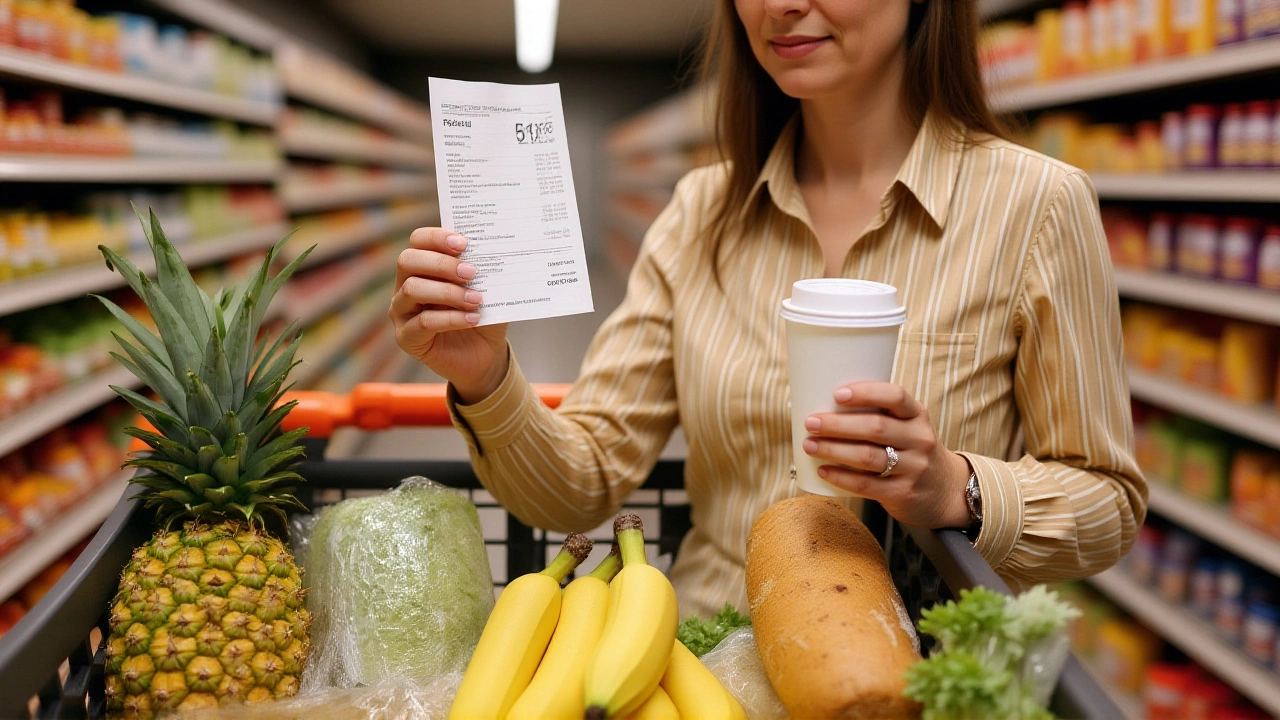When Office for National Statistics unveiled the September 2025 CPI release on October 22, the headline inflation figure stubbornly stayed at 3.8% for the third month in a row. That number applies to the United Kingdom as a whole and surprised forecasters who had been braced for a jump toward 4.1%.
Chief Executive Sir Ian Diamond highlighted that the drop in food prices stemmed largely from aggressive discounting across supermarkets.
Why the CPI stayed at 3.8%
The ONS said the overall picture was a tug‑of‑war between easing food costs and rising fuel and second‑hand car prices. While transportation and energy nudged the index upward, the first year‑on‑year drop in food and non‑alcoholic beverages—down to 4.5% from 5.1%—kept the headline from climbing.
Food prices finally cool down
Food and drink inflation fell to 4.5% in September, marking the first dip since March 2025. Vegetables, cheese, bread, fish and soft drinks all saw price drops, a trend the ONS attributed to “sales and discounting increasing at a greater rate into September 2025 than into September 2024.” On a month‑to‑month basis, grocery prices slipped 0.2%, the first decline since May 2024.
Transportation and other sectors
Transportation costs, however, rose to 3.8% year‑on‑year, up from 2.4% in August, driven mainly by higher motor fuel and air‑fare prices. Restaurants and hotels edged up to 3.9%, while clothing and footwear nudged to 0.5%. On the flip side, recreation and culture fell to 2.7% thanks to cheaper live‑music tickets, and housing and utilities eased slightly to 7.3%.
Policy ripple effects: pensions and rail fares
These numbers matter because they lock in two major adjustments. The Department for Transport will raise regulated rail fares by up to 4.8% starting January 2, 2026. Meanwhile, the Department for Work and Pensions will boost the state pension by the same 4.8% in April 2026, taking weekly payments from £221.20 to £231.82 for roughly 12.6 million retirees.
What the markets are betting on
Financial analysts at Barclays Capital, Goldman Sachs and Deutsche Bank are watching the three‑month streak below 4% closely. If September’s data is followed by October’s, many expect the Bank of England to trim the Bank Rate from 5.25% to around 5.0% in December, a 0.25‑percentage‑point cut that could reinvigorate consumer spending.
Historical perspective and what’s next
Back in October 2022, the UK’s CPI peaked at 11.1% during the cost‑of‑living crisis. Since then, the rate has slipped below 5% for twelve straight months, yet it remains the highest among G7 economies. The next ONS release, covering October data, is slated for November 20, 2025 and will inform the Monetary Policy Committee’s decision in December.
- Headline CPI: 3.8% (September 2025)
- Food & drink inflation: 4.5%
- Transportation inflation: 3.8%
- State pension uplift: 4.8% (effective April 2026)
- Rail fare increase: up to 4.8% (effective January 2026)
Frequently Asked Questions
How will the 3.8% inflation rate affect everyday shoppers?
Even though the headline figure is unchanged, the dip in food prices means grocery bills should ease slightly, while higher fuel costs could offset those savings at the pump. Overall, most households can expect a modest net effect this month.
What triggers the state pension uplift?
The UK’s “triple‑lock” guarantees that pensions rise by whichever is highest: earnings growth, CPI, or a 2.5% floor. With earnings growth reported at 4.8% for 2025, pension payments will rise by that same margin in April 2026.
Will the Bank of England cut interest rates this year?
Analysts say a sustained CPI below 4% for three consecutive months would give the Monetary Policy Committee room to lower the Bank Rate by 0.25 percentage points in December, potentially bringing it down to 5.0%.
How do rising rail fares fit into the broader inflation picture?
Rail fare adjustments are indexed to the CPI, so a 3.8% inflation rate translates into roughly a 4.8% increase on regulated routes. For commuters, that adds a small but noticeable bump to monthly travel costs.
What does the decline in food inflation signal for the economy?
The first year‑on‑year drop since March 2025 suggests supply‑chain pressures are easing and retailers are competing harder on price. If the trend holds, it could free up disposable income and help nudge the economy out of stagflation.
